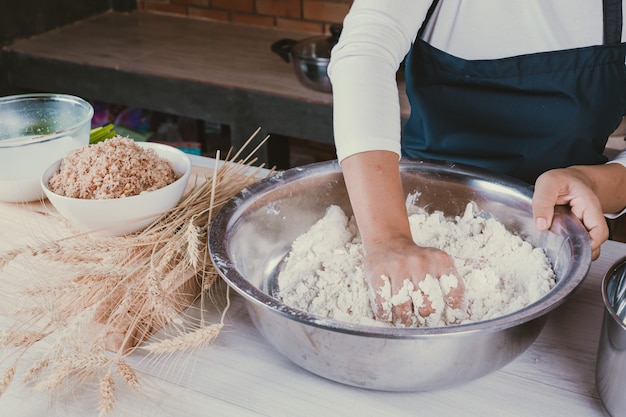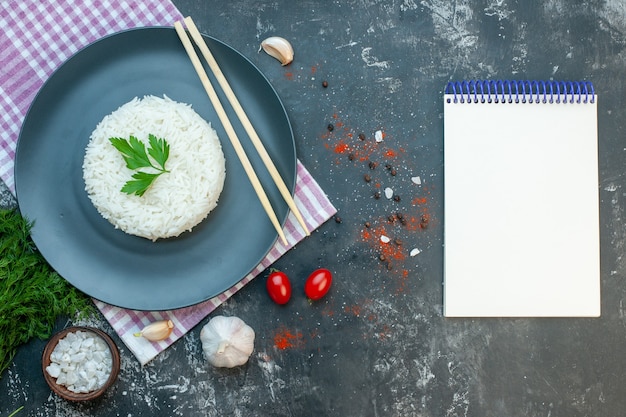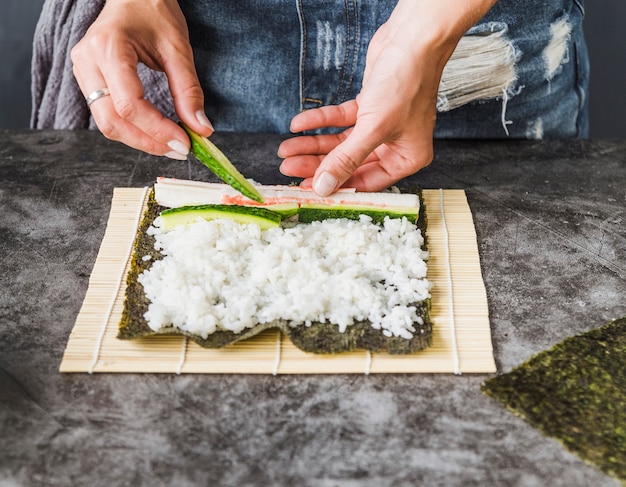Let's talk rice! It's a culinary staple in so many cultures, a blank canvas for countless dishes, and a comforting food that brings people together. But let's be real, nailing the perfect rice texture can be a real challenge. I've had my fair share of soggy, sticky disasters – we've all been there, right? But after years of experimenting and refining my techniques, I’ve finally cracked the code. So, grab your rice cooker (or your trusty saucepan), because I'm about to spill all my secrets to achieving fluffy, delicious rice every single time.
(Part 1) The Rice Variety: It All Starts with the Right Choice

Think of choosing the right rice like picking the perfect ingredient for your cake. You wouldn't use self-raising flour for a bread, would you? Rice comes in a variety of shapes and sizes, and each one brings its own unique characteristics to the table, making it ideal for different dishes.
1. A World of rice varieties
Let's break down some of the most common types:
long grain rice: This is the rice you'll likely encounter most often. Its long, slender grains separate easily when cooked, yielding that fluffy, light texture we all love. Perfect for stir-fries, pilafs, and even sushi (though it's not the traditional choice). Think of it as the versatile all-rounder.
medium grain rice: A bit shorter and rounder than long grain, this variety produces a slightly stickier rice that's perfect for dishes like rice pudding or risotto, where that creamy texture is key.
short grain rice: These tiny, round grains are the champions of stickiness. They are the star of sushi, where they provide that delightful, cohesive texture, and they're also excellent for making mochi (those chewy japanese rice cakes) or rice balls.
2. Decoding the "Sticky" Factor
The "stickiness" of rice comes down to a type of starch called amylopectin. The more amylopectin a rice has, the stickier it will be. Short grain rice, for example, has a high amylopectin content, which is why it's so great for sushi.
3. To Wash or Not to Wash: A Rice-Washing Debate
You'll often hear people recommend washing rice before cooking. The idea is that washing removes excess starch, which can make the rice stick together. But here's the thing – washing rice isn't always necessary, especially with long grain varieties. Washing can sometimes even make the rice dry and fluffy. It really comes down to your personal preference and the type of rice you're using.
(Part 2) Mastering the Stovetop: A Simple, Reliable Approach

I'm a firm believer in the simple stovetop method for cooking rice. It's easy, reliable, and doesn't require any fancy equipment. Plus, it allows for that element of control and understanding of the cooking process that I find satisfying.
1. The Ratio that Rules Them All: 1:2
The golden rule of rice cooking is the 1:2 ratio. That means for every 1 cup of rice, you use 2 cups of water. This ratio works beautifully for most long grain rice varieties. But remember, it's a starting point. For example, short grain rice often requires a little less water than long grain because it's naturally more sticky.
2. The Absorption Method: Letting the Water Work its Magic
The key to perfectly cooked rice is allowing the water to absorb into the grains. This is where the "absorption method" comes into play. Here's the basic process:
- Rinse the rice (if you're washing it). Give it a good rinse under cold water, gently swirling it around until the water runs clear.
- Combine rice and water: Transfer the rinsed rice to a saucepan with a tight-fitting lid. Add the water, ensuring the water level is about an inch above the rice.
- Bring it to a boil: Place the saucepan on the stovetop and bring the mixture to a boil. You'll see bubbles forming at the surface.
- Reduce to a simmer: Once it's boiling, lower the heat to a gentle simmer. Cover the pan tightly. The goal now is to create a gentle, even heat that will allow the water to absorb into the rice slowly and evenly.
- Cook for 15-20 minutes: Let the rice simmer for 15-20 minutes, or until the water is absorbed and the rice is tender. You'll know it's ready when the rice is no longer wet and the grains are cooked through.
- Rest, rest, rest: Once the rice is cooked, remove it from the heat and let it rest, covered, for 10 minutes. This step is crucial! It allows the steam to finish cooking the grains and ensures that the rice becomes perfectly fluffy and absorbs all the remaining moisture.
3. The Hands-Off Approach: Don't Stir the Rice
I know it can be tempting to peek and stir the rice while it's cooking, but resist the urge! Stirring releases more starch, which will make the rice stick together. Trust the process. The absorption method does its magic on its own.
(Part 3) Flavoring Rice: Beyond the Basic White

Rice is a blank canvas, waiting for your culinary creativity. There are so many ways to elevate its flavor, from a simple sprinkle of herbs to the magic of stock.
1. The Flavor-Boosting Power of Herbs and Spices
A pinch of herbs and spices can transform plain rice into a culinary masterpiece. Here are some ideas to get you started:
- Classic Simplicity: A pinch of salt, pepper, and a bay leaf will enhance the natural flavor of the rice, making it taste richer and more aromatic.
- Mediterranean Inspiration: Add a pinch of saffron, a fragrant spice with a vibrant yellow hue, along with some oregano and a squeeze of lemon juice for a burst of fresh, citrusy notes.
- Asian-Inspired Flavors: Combine ginger, garlic, soy sauce, and sesame oil for a savory, umami-packed flavor that’s perfect with stir-fries or Asian-inspired dishes.
2. The Stock Advantage: More Flavor, More Depth
Instead of just water, cook your rice in vegetable stock, chicken broth, or even beef bouillon for a richer and more flavorful base. It's a simple swap that makes a big difference.
3. The "Mix-In" Method: A Culinary Finishing Touch
After the rice has cooked, fold in fresh herbs, chopped vegetables (like spring onions or cilantro), toasted nuts (think almonds or cashews), or even dried fruit (raisins or cranberries) for an extra burst of flavor and texture. This is a great way to personalize your rice dish and add a touch of creativity.
(Part 4) Rice-Based Dishes You'll Love: Beyond the side dish
Now that you're a rice expert, let's put those skills to the test. Here are some of my favorite rice-based dishes that showcase the versatility and deliciousness of this humble grain.
1. The Classic fried rice: A comfort food Icon
Fried rice is a true comfort food, and it's incredibly versatile. You can use leftover cooked rice or make a fresh batch. The key is to stir-fry the rice with your favorite vegetables (like bell peppers, carrots, and onions), protein (chicken, shrimp, tofu, or even just scrambled eggs), and a little bit of soy sauce. Add a fried egg on top for extra decadence.
2. Aromatic rice pilaf: A Fragrant culinary journey
Rice pilaf is all about the flavors. You'll start by sautéing aromatics like onions, garlic, and herbs (like parsley or dill) in a pan. Then add the rice and stock, allowing the flavors to mingle and create a fragrant and flavorful pilaf. It's perfect as a side dish or even a main course.
3. creamy rice pudding: A Comforting Sweet Treat
For a sweet treat, try making rice pudding. It's a comforting and warming dessert, perfect for a cold evening. Cook the rice in milk with sugar, vanilla extract, and spices like cinnamon or nutmeg. Let it simmer until creamy and delicious. It’s a classic for a reason!
(Part 5) The Science Behind Rice Cooking: Understanding the Process
Let's get a little technical for a moment. Understanding the science behind rice cooking can help you achieve even better results and troubleshoot any challenges you might encounter.
1. Starch: The Building Block of Rice Texture
Starch is the key ingredient in rice, and it's responsible for its texture. When rice is cooked, the starch granules absorb water and swell, giving the rice its characteristic texture. The type of starch present (amylose or amylopectin) determines how sticky the rice will be.
2. The "Gelatinization" Process: Softening the Rice
As the rice cooks, the starch granules undergo a process called "gelatinization." They absorb water and soften, becoming translucent and making the rice tender and palatable. This is the key to achieving that soft, fluffy texture we love.
3. The Importance of Resting: Letting the Steam Work Its Magic
After the rice has cooked, it's crucial to let it rest for 10 minutes, covered. This allows the steam to continue cooking the grains, preventing them from drying out and ensuring that they become perfectly fluffy and evenly cooked. It's a chance for the rice to absorb any remaining moisture and achieve that perfect texture.
(Part 6) Troubleshooting Rice Cooking: Common Challenges and Solutions
Even the best cooks can encounter a rice-cooking mishap or two. Here's a guide to troubleshooting some common problems and finding solutions to get you back on track:
1. Overcooked Rice: Mushy and Sticky
If your rice is overcooked, it will be mushy and sticky. This typically happens when you cook it for too long or use too much water. While you can't really “uncook” overcooked rice, you can try fluffing it with a fork to make it less sticky. Next time, try adjusting your cooking time or water amount.
2. Undercooked Rice: Hard and Crunchy
Undercooked rice will be hard and crunchy. This happens when you haven't cooked it long enough or haven't used enough water. You can try adding more water and cooking for a few more minutes, but it's best to start over if you're not sure.
3. sticky rice: The Starch Overload
Sticky rice is often a result of using too much water, not washing the rice properly, or stirring the rice while it's cooking. Try using less water next time, washing the rice more thoroughly, and avoiding stirring.
(Part 7) Beyond the Basics: Exploring Advanced Techniques
Now that you're a rice master, let's explore some more advanced techniques and tips to take your rice cooking to the next level.
1. The "No-Stir" Rice Cooker: Hands-Free Perfection
For a truly hands-off approach, consider investing in a rice cooker. These appliances automatically adjust the cooking time and temperature, ensuring perfect results every time. They often have a "keep warm" function that keeps the rice warm and ready to eat. No more monitoring the stovetop!
2. The "Sous Vide" Method: The Ultimate in Precise Cooking
For an exceptionally fluffy and evenly cooked rice, try the sous vide method. It involves cooking the rice in a water bath at a precise temperature for a set amount of time. It’s a little more involved, but the results are truly impressive. The consistent temperature ensures that the rice cooks evenly, resulting in a perfect texture every time.
3. The "Microwaving" Method: A Quick and Easy Fix
In a pinch, you can cook rice in the microwave. Use a microwave-safe container with a lid, and cook on high for 5-7 minutes, or until the water is absorbed. You may need to adjust the cooking time based on your microwave's wattage and the amount of rice you're cooking. It's not the most sophisticated method, but it can be a lifesaver when time is tight.
(Part 8) FAQs: Your Rice-Cooking Questions Answered
1. Can I reuse leftover rice?
Absolutely! Leftover rice is a culinary treasure. It's perfect for making fried rice, rice salad, or even adding to soups and stews. Just make sure to store it properly in the refrigerator for up to 3-4 days.
2. How can I keep rice from sticking to the bottom of the pan?
A thin layer of oil or butter in the bottom of the pan can help prevent sticking. You can also use a non-stick saucepan.
3. What's the best way to reheat rice?
Reheating rice in the microwave or on the stovetop is perfectly fine. Just make sure to heat it thoroughly until it's steaming hot all the way through.
4. Is it safe to eat rice that has been left out at room temperature?
It's best to avoid eating rice that has been left out at room temperature for more than two hours. This is because bacteria can grow quickly in cooked rice, especially in warm temperatures.
5. Can I freeze rice?
Yes, you can freeze rice. It's best to freeze it in single-serving portions to prevent freezer burn. Just defrost it in the refrigerator overnight before reheating.
There you have it, my ultimate guide to perfect rice every time. I hope these tips and tricks help you achieve rice perfection in your own kitchen. Remember, it's all about choosing the right rice, using the correct ratios, and paying attention to the details. With a little practice, you'll be whipping up fluffy, flavorful rice in no time. Happy cooking!
Everyone is watching

Prime Rib Roast Cooking Time Chart: Per Pound Guide
Cooking TipsPrime rib roast. Just the name conjures images of lavish dinners, crackling fires, and hearty laughter. It’s ...

How Long to Bake Potatoes in the Oven (Perfect Every Time)
Cooking TipsBaked potatoes are a staple in my kitchen. They're incredibly versatile, delicious, and surprisingly easy to m...

Perfect Rice Every Time: The Ultimate Guide to Cooking Rice
Cooking TipsAs a self-proclaimed foodie, I've always been a bit obsessed with rice. It's the foundation of countless cuisi...

The Ultimate Guide to Cooking Asparagus: Tips, Techniques, and Recipes
Cooking TipsAsparagus. The mere mention of this spring delicacy conjures up images of vibrant green spears, crisp and burs...

Ultimate Guide to Cooking the Perfect Thanksgiving Turkey
Cooking TipsThanksgiving. Just the word conjures up images of overflowing tables laden with delicious food, the scent of r...
